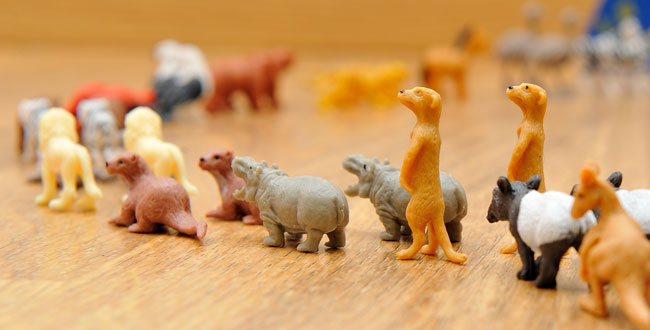Blog
Subscribe
Join over 5,000 people who receive the Anecdotally newsletter—and receive our free ebook Character Trumps Credentials.
Categories
- Anecdotes
- Business storytelling
- Collaboration
- Communication
- Corporate Storytelling
- Culture
- Decision-making
- Employee Engagement
- Events
- Fun
- Insight
- Leadership Posts
- News
- Podcast
- Selling
- Strategy
Archives
- April 2024
- March 2024
- December 2023
- November 2023
- October 2023
- September 2023
- August 2023
- July 2023
- June 2023
- May 2023
Years
The Science of Storytelling
What studies show and what businesses need to know about the power of story
By Rob Grundel, Shawn Callahan, Mark Schenk and Mike Adams
To download a PDF version of this article, click here.
Shawn Callahan tells of how, when he started Anecdote 18 years ago, there was great resistance among business folk to using the word ‘story’. The term was associated with fantasy and untruth, and telling stories was not verifiably beneficial to any P&L statement.
Let’s first address this misconception. When people hear the word ‘storytelling’, they think it means ‘crafting a story to influence people’. What we’ve learned over the years is not to create a story or to make anything up, but rather to collect examples of things that are already happening and which people can retell to make a business point. When we use the word ‘story’ in this paper, we are referring to the telling of these examples.
Things have changed since those early years. Storytelling is now acknowledged as an important tool in the arsenal of every leader and salesperson. But how do we know that story ‘works’?
Over the past 50 years, there has been some fascinating research showing the impact that stories can have when human beings use them to pass on information. We want to share some of our favourite studies. In doing this, we’ve borrowed from and modified Anecdote blog articles and parts of Shawn Callahan’s book Putting Stories to Work and Mike Adams’s book Seven Stories Every Salesperson Must Tell.
To back the claim that using a story in business ‘works’, we need to demonstrate the following characteristics:
- Story is a technology or a way of communicating that’s accessible to everybody
- Story is a natural information-transfer mechanism between people
- Introducing any new idea with story makes that idea more memorable and emotionally resonant
- Story is likely to inspire action
- Any strongly held view can be influenced using story.
Everyone is a storyteller
When Shawn teaches storytelling, he likes to ask, “Who here is a storyteller?” Typically, only a small number of people raise their hands, often hesitantly. There seems to be a perception that being a storyteller is reserved for those entertaining raconteurs and life-of-the-party types. While we often think ‘She’s a storyteller!’, we rarely consider ourselves to be one.
The evolutionary psychologist Robin Dunbar demonstrated the falsity of this thinking in a simple experiment. He organised for his PhD students to go to places where people speak informally—on the street, in cafes and bars, around the proverbial water cooler—and listen to what was said, as well as record the topics of conversation. Dunbar found that when we speak informally with friends and colleagues, about 65 percent of the time we talk about ‘who did what with whom’.[1] This type of story is commonly known as gossip.
Most of us, especially in business, regard gossip as bad, but Dunbar defines it less pejoratively: he thinks of it as speaking about someone who is not in the conversation.[2] According to this definition, gossip can be positive as well as negative. Take this hypothetical example: “Did you see what Sarah did yesterday during the sales call? No-one else was going to say it, even though it was the elephant in the room. But she just threw it down on the table and it opened up the discussion. We couldn’t have gotten to where we did without her gutsy effort.” This gossip is building Sarah’s reputation, not tearing it down.
Dunbar showed that we all gossip—that is, we all tell stories about other people. What is important is the intent we have when we do it. About 65 percent of the time when we’re talking informally, we are telling stories. It’s hardwired into how we communicate. So everyone is a natural-born storyteller.
Stories are your brain’s natural language
Think about the last slide deck you saw. What did the slides typically show? Probably bullet points, statements, charts and numbers.
The problem is that this kind of information—facts, figures and assertions—is not our mind’s natural language. It is hard for us to assimilate because it is generally abstract and the brain does not have a frame in which to fit it.
Our neocortex, the large and wrinkly outer layer of our brain, takes up about three-quarters of our brain volume. It processes all of our senses, thinks thoughts and makes decisions. In 2004, neuroscientist Jeff Hawkins suggested that what the neocortex does involves ‘learning and recalling sequences of patterns’.[3]
Fellow neuroscientist Lisa Feldman Barrett offers a similar idea: “I hypothesize that, using past experience as a guide, the brain prepares multiple competing simulations that answer the question, ‘What is this new sensory input most similar to?’”[4]
Have you ever put your foot down on an escalator only to realise that it’s not moving? You feel as if you’ve lost your balance. What has just happened in your brain to make you feel this way?
When your eyes send visual information showing the escalator through the optic nerve, your neocortex finds all the places across your eight senses (sight, taste, touch, hearing, smell, balance, movement and feelings) that have previously been associated with this sequence of images and predicts what’s going to come next: what it will be like when you place your foot down; what the rubber banister will feel like; how your surroundings will start to speed by. It is predicting the ‘story’ of all your senses engaging with an escalator. When the escalator does not move, this prediction is proven false, and in response your brain produces ‘surprise’ and scrambles to integrate the new information into its earlier prediction.
Similarly, when I say the word ‘chair’ to you, there isn’t one single place in your brain that holds all the information on chairs. Rather, the events related to ‘chair’ for each sense come together in a sequence. The action of sitting down, the feeling of fabric or wood, the embarrassment felt when another kid pulled a chair out from under you in primary school, these all get routed together in a place in your brain near the apex of your spine to form your complete idea of ‘chair’.
So what happens when I tell you a story? As I talk through the events, your neocortex will plumb the sequences already stored across your eight senses, and as I relate something about a chair, coffee, an escalator, it will predict what will come next in the story. If the story I tell you lines up exactly as predicted by your neocortex (for example, if my story is about how I went up a functioning escalator), then you’ll call my story ‘boring’. To be worth telling, a story needs a ‘non-functioning escalator’ so that that the listener’s neocortex registers surprise and begins to form new patterns.
In our working lives, however, communication often does not come in the form of a sequence of events. A leader may say, “Instead of using system X for timesheets, as of tomorrow we are using this new system Y.” When we communicate in this way, we assume that the brain can simply up-end an entire set of sequences and magically replace it with another set. The two stories that would actually be valuable to tell in this scenario would be the sequence of events that led to the timesheet system needing to be changed, and then the sequence of events that will be needed to log into the new system.
We’ve coached thousands of people in telling their stories over the years, and one of the single biggest bits of feedback we give is to ‘add moments’. This means rather than saying, “I was fired”, say, “I walked into my boss’s tiny office overlooking the bay in San Francisco and he said to me, ‘Tim, I like you, but I can’t keep you.’” Adding a moment means giving information relating to one of our eight senses that our neocortex can make predictions (and be surprised) about. What did something look like, what did it smell like, what did it feel like, what did you hear?
Telling stories—sequences of events that appeal to our senses and contain a surprise—is a natural way to pass information to the brain. All of this information is stored as sequences: as you move through the world, your brain perceives what’s going on and continually predicts what will happen next. Telling a well-structured story means encoding a new sequence into a listener’s brain without them having experienced the events in question. This is how we learn, are inspired, and begin to imagine new things.
Stories sync your brain with your listener’s
In an experiment at neuroscientist Uri Hasson’s lab in Princeton in 2010, a person was told a story while hooked up to a functional MRI (fMRI) machine.[5] This person was then instructed to retell the story ‘as if telling [it] to a friend’. While they were talking, both the story and their brain activity were recorded. With the story duly documented, the researchers asked 12 individuals to listen to it as they lay in the fMRI tunnel.
The first thing the researchers noticed was that the brain activity of the storyteller matched the brain activity of the listener—the same parts of the brain lit up on the fMRI. And as you would expect, there was a small time-lag as the listener comprehended the story. The researchers were seeing brain activity synchronise between speaker and listener.

To test whether the listener was really responding to what was being said and not just to the presence of noise, the researchers also recorded a version of the story in Russian and played this to their listening subjects. The result: when the story was told in Russian, there was no brain activity correlation. The listener had no idea what was being said.
As noted, the brain activity of the listener lags because it takes a moment for them to comprehend what’s being said. Remarkably, the researchers discovered many instances when the brain activity of the listener preceded what was said—the listener was predicting what was coming next, something you can only do when listening to a story. The subjects who did more predicting did better at the comprehension test they were asked to take after they’d heard the story.
This research showed that the comprehension of communication is directly related to how brains are coupled, and that this coupling is only possible through the telling of a story.
Story is memorable
One of the arguments for using a story is that transmitting a message by wrapping it in a narrative makes it memorable. Time is a scarce resource, and leaders and salespeople don’t get many chances to communicate an important message. The stickiness of these messages is vital.
In 1969, two Stanford professors, Gordon Bower and Michael Clark, set out to test the memorability of words embedded in stories versus that of a random list of words.[6] Students were asked to memorise and recall 10 sets of unrelated words. The control group remembered the words in whatever order occurred to them. For the story component, the students constructed stories that contained all the words—one story per set. When asked to recall these words, the students who constructed stories were able to remember six to seven times as many compared with the random set.
That’s a massive improvement! Imagine if we could sprint 100 metres six to seven times faster, or make a business decision six to seven times faster.
These results correlate with those of a number of other studies. In 1980, three researchers at the University of California compared the memorability of narrative texts (such as the story of Noah’s ark) and expository texts (such as an encyclopaedia entry for armadillos). Twelve texts were rated by students for their narrativity, familiarity and interestingness. The narrative texts were read about twice as fast as the expository texts,[7] yet they were remembered twice as well.[8] There was a high correlation between narrativity and the amount of information recalled (0.92), yet familiarity and interestingness only had a very small effect on both reading time and the amount recalled.
Stories inspire behaviour change
Leaders and salespeople want their words to lead to some level of behaviour change. The neuroeconomist Paul Zak has conducted some fascinating research on how stories stimulate emotional reactions that consequently lead to behavioural change.
In 2004, Zak’s lab discovered that a chemical in the brain called oxytocin determines who we can trust.[9] Since then, Zak has focused on how certain stories produce oxytocin in a listener’s brain, leading to deeper trust and consequently to behaviour change.
In one experiment, Zak showed two groups of people a video of a father interacting with his two-year-old son, whose name was Ben. Towards the end of the video shown to one group, the father faced the camera and said that Ben was dying of cancer. In the video shown to the other group, this part was left out. The people in both groups had their oxytocin levels measured before and after seeing the videos. The researchers observed a much higher level of oxytocin in those who watched the video with the big reveal. Zak says in his research, “Tellingly, the change in oxytocin had a positive correlation with participants’ feeling of empathy for Ben and his father.”[10]
Following this insight, Zak was curious to see how oxytocin influences behaviour. He set up an experiment in which 40 people were injected with either oxytocin or a placebo and then asked to watch British public service announcement videos. Before watching the videos, each participant had been given £5. Afterwards, each person was asked if they wanted to donate some or all of that money to the cause outlined in the video they’d watched. Those who’d been injected with oxytocin donated 56% more money to charity.[11]
In further research, Zak found that if a person can pay attention to a story and stay emotionally engaged with the characters, that person is more likely to ‘help others in costly and tangible ways’.
Story helps to change strongly held beliefs
There is a generally held view that a convincing argument is persuasive in itself. Whether we have a strategy to share with our team, or a proposition to share with a client, we expect that if our argument is sufficiently compelling, then we will influence whomever we’re in front of.
But what if we need to change a strongly held belief?
When we strongly believe something, we shield ourselves from new facts that conflict with our convictions. We can twist just about anything to suit our own viewpoint. So how do you help someone with a strong belief to see things from a different perspective?
Several studies have looked at how we defend our beliefs from contradictory evidence. One study examined a group made up of partisan Republican and Democrat supporters during the 2004 US presidential election.[12] Researchers examined the participants’ brains with an fMRI while they were read contradictory statements about candidates on both sides of the political divide. The research subjects easily identified contradictions in their non-preferred candidates but failed to recognise them in their preferred candidates.
A more recent fMRI study, conducted by a team that included neuroscientist and public intellectual Sam Harris, found that subjects were far more resistant to counterarguments on political, religious and moral topics than those on non-political beliefs.[13] The study found that defending one’s beliefs against challenging evidence is a form of internally directed cognition involving both disconnection from externally presented evidence and a search through memory for relevant counterarguments.
What if stories rather than facts are used as counterarguments? Even that has been studied using an fMRI scanner!
In 2017, a team headed by cognitive neuroscientist Jonas Kaplan published an article called ‘Processing Narratives Concerning Protected Values’.[14] The team had wanted to understand how narratives influence ‘protected values’, such as those related to core personal, national and religious beliefs. So they recruited 78 American, Iranian and Chinese test subjects and read them real-life stories while they were in an fMRI machine (the Iranian and Chinese cohorts had recently emigrated to the United States). When the participants felt that the hero of the story was encountering a (self-reported) protected value, specific areas of the cortex known to be involved in social and moral thinking were more active compared with the reaction to normal plot twists, and the participants took longer to answer. This effect was seen in each ethnic group, although its strength varied by group.
These studies show that new facts and one-off storytelling won’t change committed beliefs. A set of beliefs constitutes a consistent model in the mind of the believer that has been built up over their lifetime through personal experience, popular stories, myths, fables and parables. And there can be hidden motives for holding those beliefs—showing loyalty to their group, for example. Assertions that don’t fit the model will just bounce off it. To have any chance of changing firm beliefs, you must provide new experiences and new stories.
The first and best story wins
In 1994, Holly Johnson and Colleen Seifert conducted one of the first experiments to show how stories can have a big impact in correcting misinformation.[15] Their experiment involved a report into a suspicious fire.
Two groups were sent a series of messages simulating how a warehouse fire might be reported in real time. The first group learned that firefighters had traced the fire to a short circuit next to a closet containing volatile materials such as oil-based paints and pressurised gas bottles. In a follow-up message, the group was told there had been a mistake: there had not been any volatile materials in the closet and they should just ignore that misinformation. The second group was also told about the short circuit and the closetful of volatile material, and then received a message saying this information was incorrect and should be ignored. But they were also given an alternative explanation for what might have happened: that, in fact, rather than paints and gas bottles, the closet had actually held petrol-soaked rags and empty fuel drums, suggesting that arson might have taken place. This group now had a new story to explain the fire.
Both groups were subsequently questioned about their understanding of what had happened. When the first group was asked “Why did the fire spread so quickly?”, their response was that “the paints and gas bottles must have exploded and accelerated the fire”. Evidently, despite being told to do so, they hadn’t struck that misinformation from their minds. The second group, however, responded to the question by suggesting arson, having discarded the misinformation and instead embraced the new story about the fuel-soaked rags.
Clearly, the second group, which had heard the plausible story that implied arson, was much less influenced by the original misinformation than the first group, which had simply been told that a mistake had been made. This study demonstrated that it is very difficult, if not impossible, to beat a story with just facts. What you need is a better story.
It’s understandable that stories are so robust and resistant to change. When we hear a story, we take in a complete and internally coherent bundle of information. But if you cut out even one small bit, it’s no longer complete and coherent. Without a replacement story at hand, we revert to the original version—even when, as rational decision-makers, we know that part of the story we are relying on to make decisions is untrue.[16]
The first story told has an oversized impact on what people believe. Researchers at the University of Western Australia have shown that when a good story is revealed as misinformation, it’s hard for our memories to let it go, even after a more plausible story is told. It seems that not only does the best story win, the first story told really sticks.[17]
The last thing to remember when correcting misinformation or making your story stick is that people prefer simple explanations over complex ones.[18] Don’t tell an overly involved story to correct misinformation.
Conclusion
Although the power of storytelling has been known for many years, the examples above show the benefits of spending time learning how to do it well.
Robin Dunbar showed that we are all innate storytellers, but because of the practices we’ve built up in corporate life, we need to develop the habit of, and the techniques for, telling stories at work.
Paul Zak’s research shows just how influential stories can be in changing people’s behaviour. As leaders, it is imperative that we find and tell stories that are ethical and value-driven, as well as meaningful and emotional.
Finally, look at how noisy our lives are and how short our attention spans have become. Because sharing important information by using a story is more memorable, and the first story often wins, it is imperative that leaders take the time to craft and test their stories. That way, the right information will be given at the right time, and it will land in the manner intended.
References
- Dunbar, R.I.M. (2004). ‘Gossip in Evolutionary Perspective.’ Review of General Psychology. 8(2):100-110. https://doi.org/10.1037/1089-2680.8.2.100
- Dunbar, R.I.M. (2002). Grooming, Gossip, and the Evolution of Language. Harvard University Press.
- Hawkins, Jeff & Subutai Ahmad (2016). ‘Why Neurons Have Thousands of Synapses: A Theory of Sequence Memory in Neocortex.’ Frontiers in Neural Circuits, 30 March, 10: 23. https://doi.org/10.3389/fncir.2016.00023
- Feldman Barrett, Lisa (2017). ‘The Theory of Constructed Emotion: An Active Inference Account of Interoception and Categorization.’ Social Cognitive and Affective Neuroscience, January, 12(1): 1–23. https://doi.org/10.1093/scan/nsw154
- Stephens, G, L Silbert & U Hasson (2010). ‘Speaker–Listener Neural Coupling Underlies Successful Communication.’ Proceedings of the National Academy of Sciences of the United States of America, 107: 14425–30. https://b0e95918-69fa-461c-8a44-239d3f2b4c80.filesusr.com/ugd/b75639_9acbfd04e31f47338a80849e661f1b09.pdf
- Bower, Gordon & Clark, Michael (1969). ‘Narrative Stories as Mediators for Serial Learning.’ Psychonomic Science, 15: 181–2. https://www.researchgate.net/publication/232549160_Narrative_stories_as_mediators_for_serial_learning
- Graesser, A.C., K. Hauft-Smith, A.D. Cohen and L.D. Pyles (1980). ‘Advanced Outlines, Familiarity, Text Genre, and Retention of Prose.’ Journal of Experimental Education, 48: 209–20.
- Graesser, A.C., N.L. Hoffman and L.F. Clark (1980). ‘Structural Components of Reading Time.’ Journal of Verbal Learning and Verbal Behavior, 19(2): 135–51.
- Kosfeld, M., Heinrichs, M., Zak, P.J., Fischbacher, U. and Fehr, E. (2005). ‘Oxytocin increases trust in humans.’ Nature, 435(7042), pp.673-676.
- Zak, P.J., (2013). How Stories Change the Brain. Greater Good. Available at: https://greatergood.berkeley.edu/article/item/how_stories_change_brain
- Zak P. J., (2015). Why inspiring stories make us react: the neuroscience of narrative. Cerebrum: the Dana forum on brain science, 2015, 2.
- The Political Bias Study (2006). Described in Wikipedia, https://en.wikipedia.org/wiki/Drew_Westen.
Original article: Drew Westen, Pavel S. Blagov, Keith Harenski, Clint Kilts and Stephan Hamann (2006). ‘Neural Bases of Motivated Reasoning: An fMRI Study of Emotional Constraints on Partisan Political Judgment in the 2004 U.S. Presidential Election.’ Journal of Cognitive Neuroscience (Massachusetts Institute of Technology) 18 (11): 1947-58. - Jonas T. Kaplan, Sarah I. Gimbel and Sam Harris (2016). ‘Neural correlates of maintaining one’s political beliefs in the face of counterevidence.’ Scientific Reports, 6(1): 39589.
- Kaplan et al. (2017). ‘Processing Narratives Concerning Protected Values: A Cross-Cultural Investigation of Neural Correlates.’ Cerebral Cortex, 27:1428–38.
- Johnson, HM & CM Seifert (1994). ‘Sources of the Continued Influence Effect: When Misinformation in Memory Affects Later Inferences.’ Journal of Experimental Psychology, 20(6): 1420–36.
- Wilkes, AL & M Leatherbarrow (1988). ‘Editing Episodic Memory Following the Identification of Error.’ The Quarterly Journal of Experimental Psychology, ‘Section A: Human Experimental Psychology’, 40(2): 361–87.
- Ecker, UKH, S Lewandowsky & DT Tang (2010). ‘Explicit Warnings Reduce But Do Not Eliminate the Continued Influence of Misinformation.’ Memory Cognition, 38(8): 1087–100.
- Lombrozo, T (2007). ‘Simplicity and Probability in Causal Explanation.’ Cognitive Psychology, 55(3): 232–57.
further reading
- Adams, Mike (2018). Seven Stories Every Salesperson Must Tell. Kona Press, Melbourne. www.anecdote.com/seven-stories
- Callahan, Shawn (2016). Putting Stories to Work: Mastering Business Storytelling. Pepperberg Press, Melbourne. www.anecdote.com/putting-stories-to-work
We’ve created a PDF white paper of this blog post. If you would like to download it, click here.
 About Rob Grundel
About Rob Grundel
Rob Grundel is a Principal at Anecdote International. He has coached individual leaders and facilitated rooms around the world for companies like Capco, Siemens and Mastercard. He has helped craft keynotes, strategies, change narratives and ways of working. At the heart of all this work is finding the shared story in the room. Rob is also a musician and producer. He is based near Melbourne in Australia.






